Abstract
1. Incubation conditions were established in experiments with human-prostate homogenates for almost complete conversion of [4-14C]testosterone into at least ten transformation products. 2. Whole homogenates of tissue with benign hypertrophy were shown to contain 3α-, 3β- and 17β-hydroxy steroid dehydrogenases, Δ4-3-oxo steroid 5α- and 5β- reductases and unidentified hydroxylases. 3. Most of the 17β-hydroxy steroid-dehydrogenase activity was located in the mitochondria, which showed little other activity. 4. The 3α- and 3β-hydroxy steroid dehydrogenases and the 5β-reductase were located in the high-speed supernatant and required supplementation with NADPH for activity. 5. The 5α-reductase was located in both microsomal and high-speed supernatant fractions and also required supplementation with NADPH.
Full text
PDF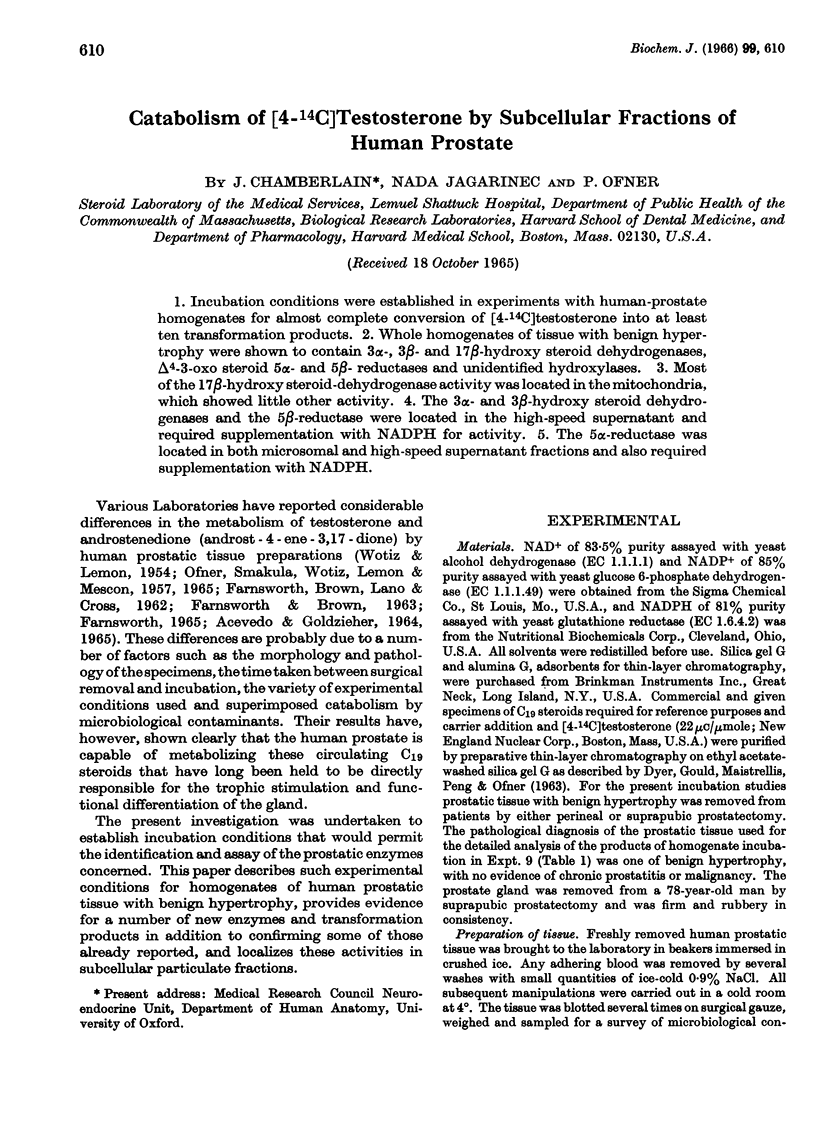
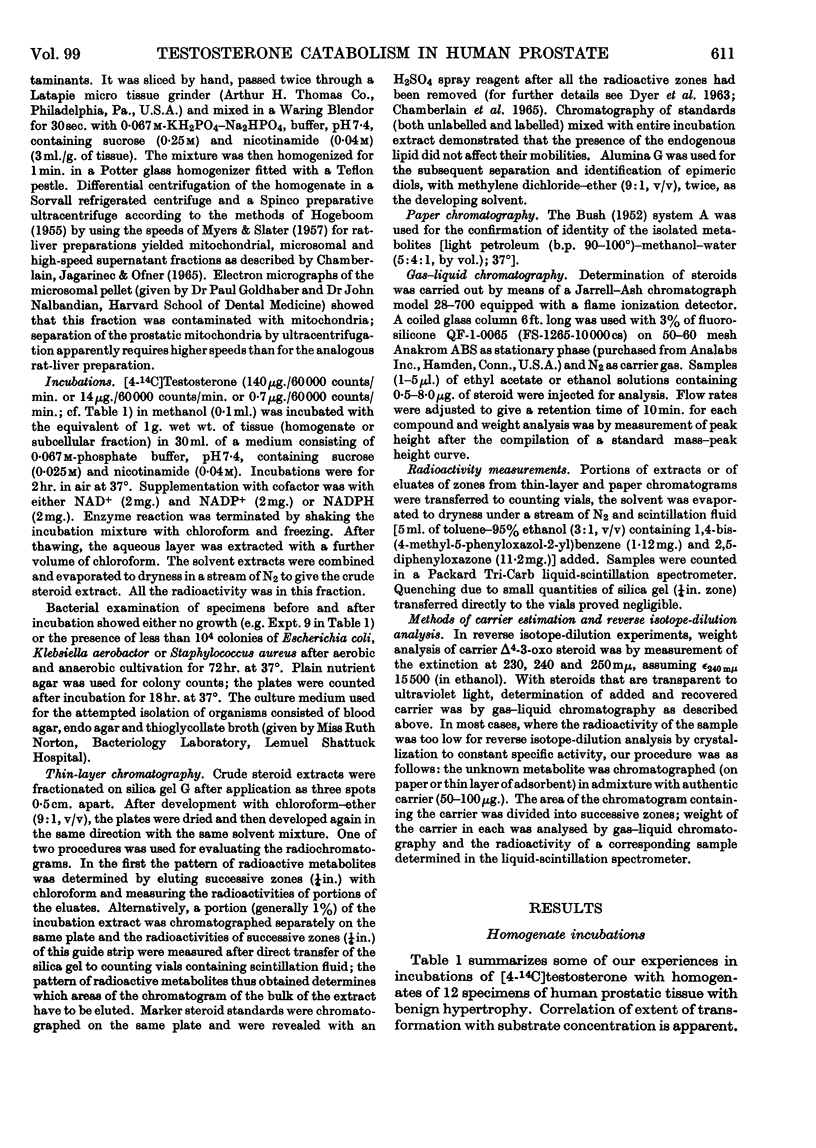
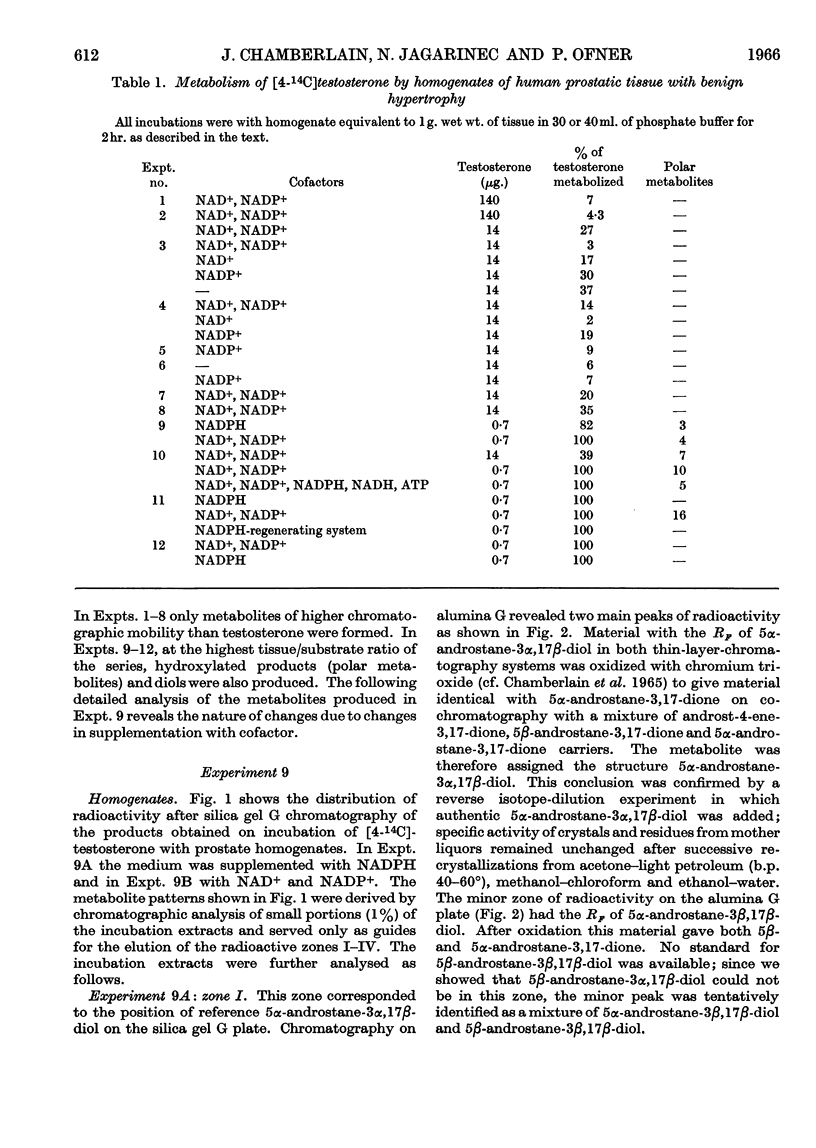
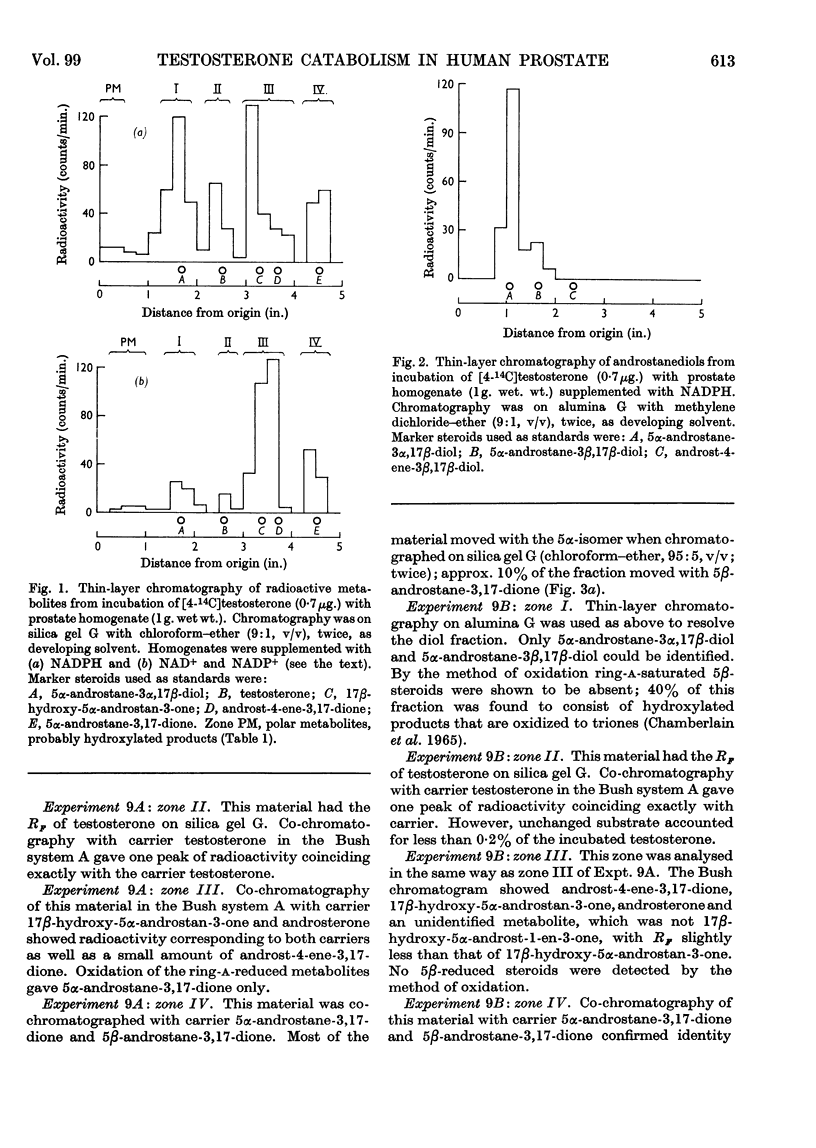
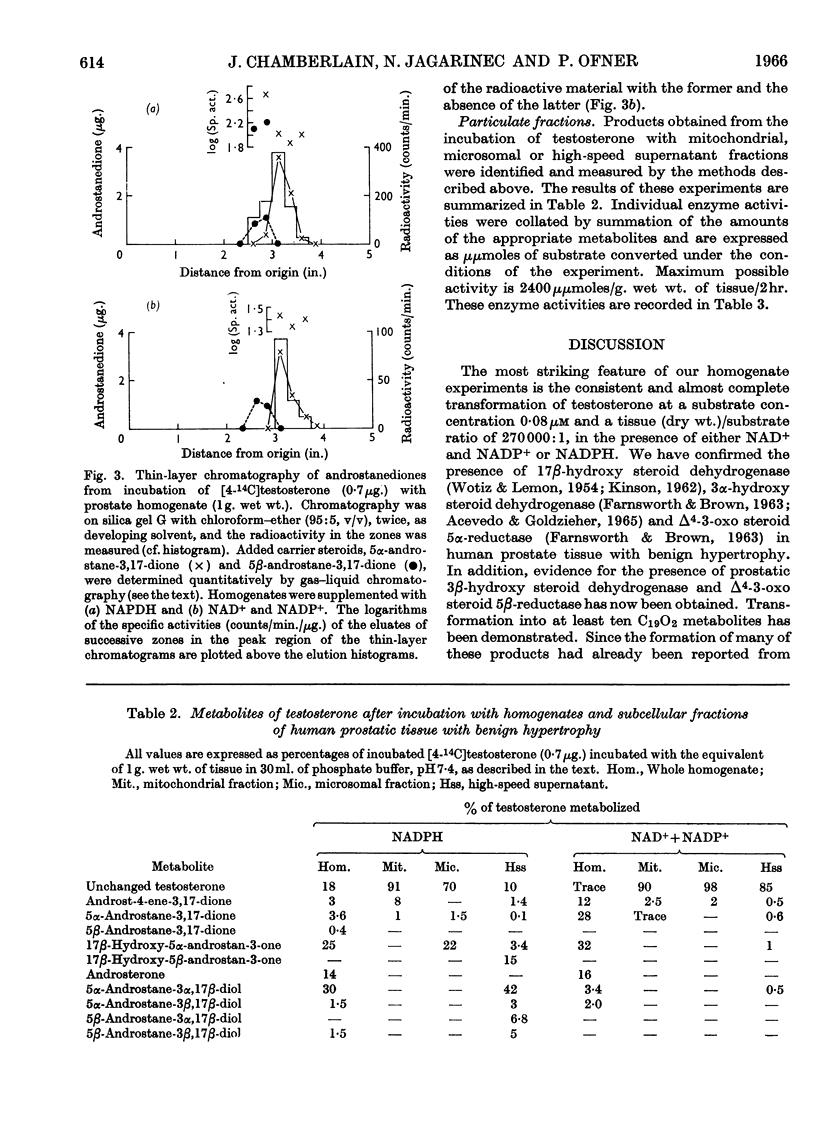
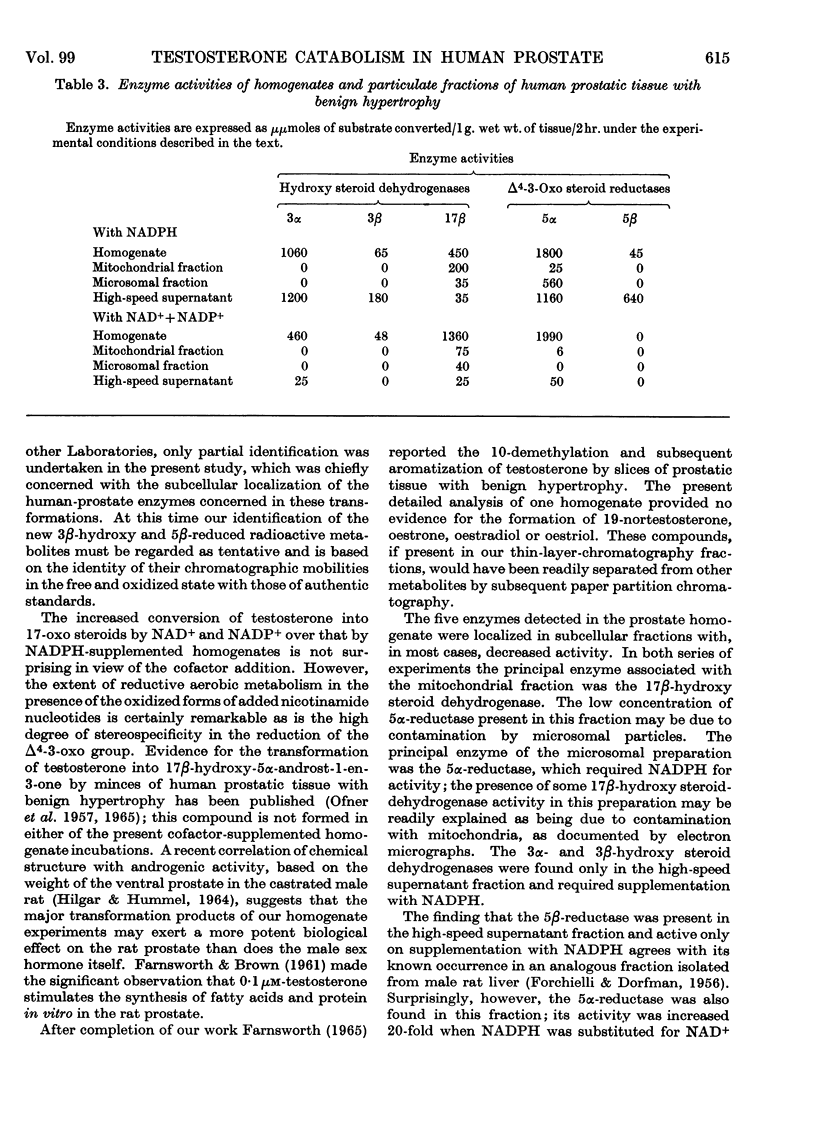
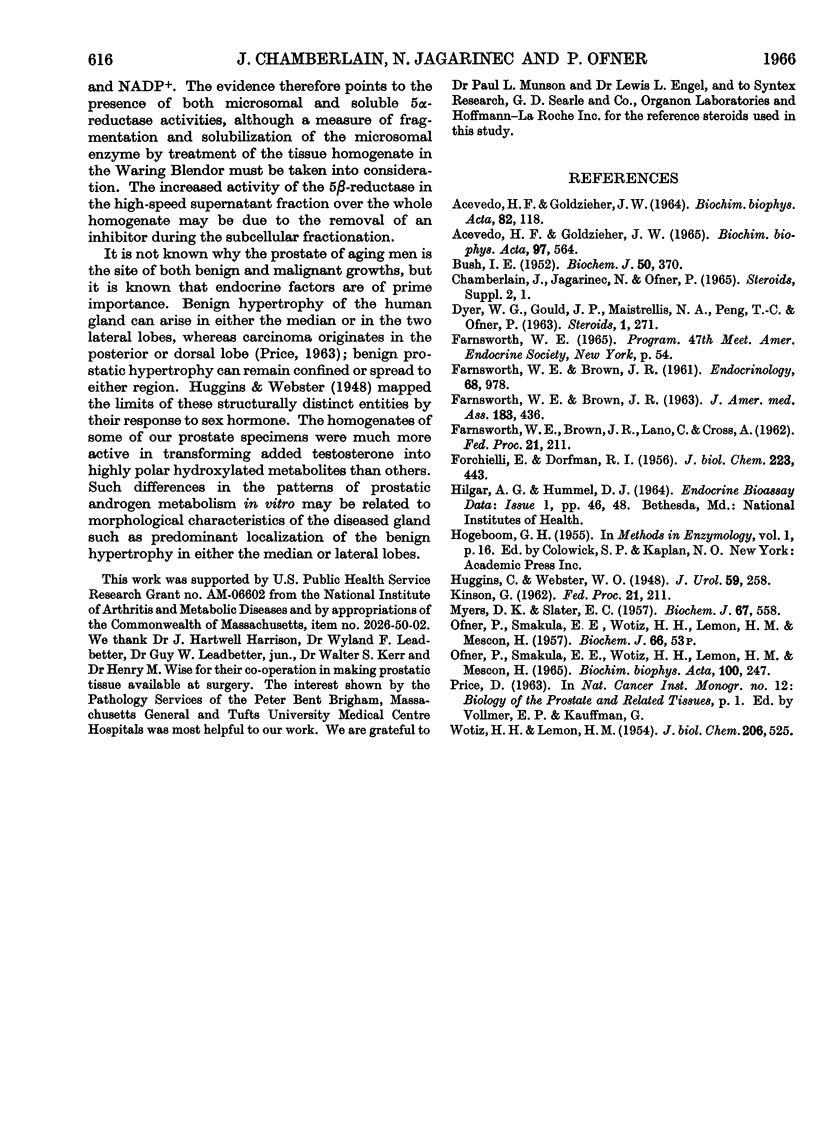
Selected References
These references are in PubMed. This may not be the complete list of references from this article.
- ACEVEDO H. F., GOLDZIEHER J. W. FURTHER STUDIES ON THE METABOLISM OF 4-(4-14C)ANDROSTENE-3,17-DIONE BY NORMAL AND PATHOLOGICAL HUMAN PROSTATE TISSUE. Biochim Biophys Acta. 1965 Mar 8;97:564–570. doi: 10.1016/0304-4165(65)90170-4. [DOI] [PubMed] [Google Scholar]
- BUSH I. E. Methods of paper chromatography of steroids applicable to the study of steroids in mammalian blood and tissues. Biochem J. 1952 Jan;50(3):370–378. doi: 10.1042/bj0500370. [DOI] [PMC free article] [PubMed] [Google Scholar]
- DORFMAN R. I., FORCHIELLI E. Separation of delta 4-5 alpha-hydrogenases from rat liver homogenates. J Biol Chem. 1956 Nov;223(1):443–448. [PubMed] [Google Scholar]
- FARNSWORTH W. E., BROWN J. R. Metabolism of testosterone by the human prostate. JAMA. 1963 Feb 9;183:436–439. doi: 10.1001/jama.1963.63700060003011a. [DOI] [PubMed] [Google Scholar]
- FARNSWORTH W. E., BROWN J. Androgen of prostate biosynthetic reactions. Endocrinology. 1961 Jun;68:978–986. doi: 10.1210/endo-68-6-978. [DOI] [PubMed] [Google Scholar]
- KREBS H. A., WHITTAM R., HEMS R. Potassium uptake by Alcaligenes faecalis. Biochem J. 1957 May;66(1):53–60. doi: 10.1042/bj0660053. [DOI] [PMC free article] [PubMed] [Google Scholar]
- MYERS D. K., SLATER E. C. The enzymic hydrolysis of adenosine triphosphate by liver mitochondria. I. Activities at different pH values. Biochem J. 1957 Dec;67(4):558–572. doi: 10.1042/bj0670558. [DOI] [PMC free article] [PubMed] [Google Scholar]
- OFNER P., SMAKULA E. E., LEMON H. M., MESCON H., WOTIZ H. STUDIES IN STEROID METABOLISM. 18. EVIDENCE FOR THE CONVERSION IN VITRO OF (4-14C)TESTOSTERONE TO 17-BETA-HYDROXY-(4-14C)5-ALPHA-ANDROST-I-EN-3-ONE BY HUMAN PROSTATE. Biochim Biophys Acta. 1965 Apr 12;100:247–255. [PubMed] [Google Scholar]
- WOTIZ H. H., LEMON H. M. Studies in steroid metabolism. I. Metabolism of testosterone by human prostatic tissue slices. J Biol Chem. 1954 Feb;206(2):525–532. [PubMed] [Google Scholar]


